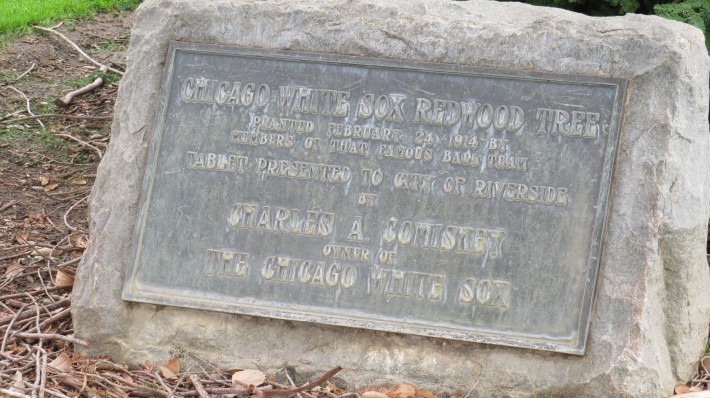The Raincross Gazette is on Summer Break
The Gazette's 2.5-person newsroom is on a publishing break through the end of July. Regular publishing will resume on Monday, August 4, 2024.
In 1914, the Chicago White Sox played a game in Riverside's Evans Park against the Los Angeles Angels. Riversiders asked the winning team to plant a tree in remembrance of the rare event.

For decades, springtime for Americans has involved the excitement and anticipation that goes with the preparations for another baseball season. After a now-resolved delay, spring training is back underway for teams across the U.S.
Yet for the first half of the 20th century, those living in the western half of the country did not have a Major League Baseball team to call their own. The only teams west of the Mississippi in 1914 were the St. Louis Cardinals and the St. Louis Browns. And St. Louis is just barely west of that great river.
So, in 1914 when word came about that the Chicago White Sox would play a game on March 25 at Evans Park in Riverside against the Los Angeles Angels, a then-Pacific Coast League club, the community was naturally excited.
The White Sox arrived in Riverside on March 24, the evening before the game, and stayed at the Glenwood Mission Inn, the original name for today’s Mission Inn. Among those who played for the team at that time were Harry Lord, first baseman Hal Chase, and catcher Ray Schalk, a future Hall of Famer. That night, Schalk was the guest of honor at a dinner given by Ralph Ayers, an old friend of Schalk from their hometown of Litchfield, Illinois. Schalk said that he appreciated the beauties of Southern California and that Riverside was the prettiest town of them all.
E. E. Dwyer, a janitor at the First Methodist Church in Riverside conceived of the idea to have the White Sox players plant a special tree in a Riverside park. Harry B. Dunbar, a then-city park gardener, got involved with the idea and spearheaded the arrangements. The decision was made to have the players plant a Redwood tree at the head of Low Park at the junction of Magnolia and Palm Avenues.

After Lord, the White Sox team captain, consented to the idea, he, his wife, along with Chase and his wife, were taken to the park the morning of March 25. There, former Mayor Oscar Ford – who served Riverside from 1913-1917 – and Riverside dignitaries, including J. C. Hardman, Charles L. Reynolds, Gaylor Rouse, W. L. Leamon and Harry Dunbar, participated in the ceremony. Lord oversaw the work as Chase dug the hole and planted the tree which was later dubbed the “White Sox Redwood.”
The ceremonial tree planting at Low Park was the first of a number of trees that would later be planted by the dignitaries in what became known as the Friendship Grove. Over the years, several tablets and trees have disappeared although a few remain.
In some ways, the highly anticipated game that March 25 afternoon was almost anticlimactic after the tree planting ceremony. The White Sox had no trouble beating the Angels by a score of 10–5. Ina Young Keller, the only woman member of the National Baseball Writers Association at that time, was in attendance. She wrote a story that day on the game for various newspapers, including the Riverside Daily Press.
Years later in September 1926, W. L. Leamon, sports editor of the Riverside Daily Press, sent a picture of the “White Sox Redwood” to team owner Charles Comiskey. Leamon suggested that a bronze tablet in a cement base be erected at the foot of the tree. Delighted at the idea, Comiskey – who was also a former baseball player – wrote back that he would pay for the costs. Plans were then taken to construct the plaque and set up an unveiling ceremony.
The White Sox bronze tablet set in gray granite was finally unveiled Tuesday, March 15, 1927. It was presented to former Riverside Mayor John Jarvis in Comiskey’s name. (Comiskey was not in attendance.) Unfortunately, those responsible for the plaque set the memorable game’s date to February 25 instead of March 25, incorrectly recording it a month earlier. No one is sure how the mix-up occurred.
The Redwood tree was almost 40 feet high at the time of the ceremony. Harry Williams, a then-sports editor for the Los Angeles Times and then-president of the PCL gave the main speech and tribute to Comiskey. The Junior Reserve Officers’ Training Corps band under the direction of Gustav Hilverkus had performed the event’s music.
Let us email you Riverside's news and events every Sunday, Monday, Wednesday, and Friday morning. For free.